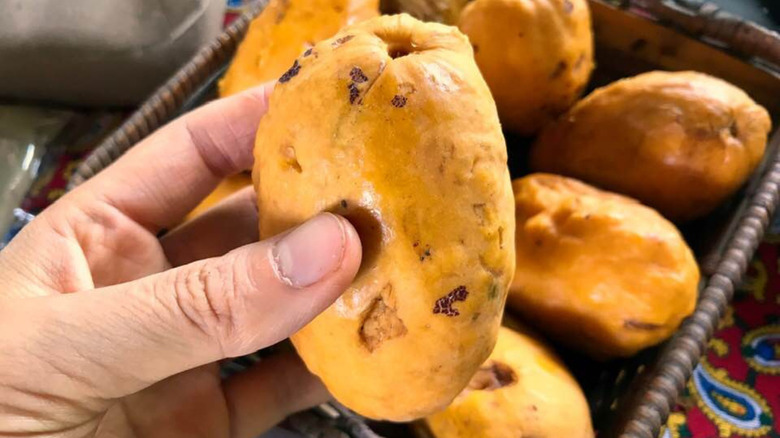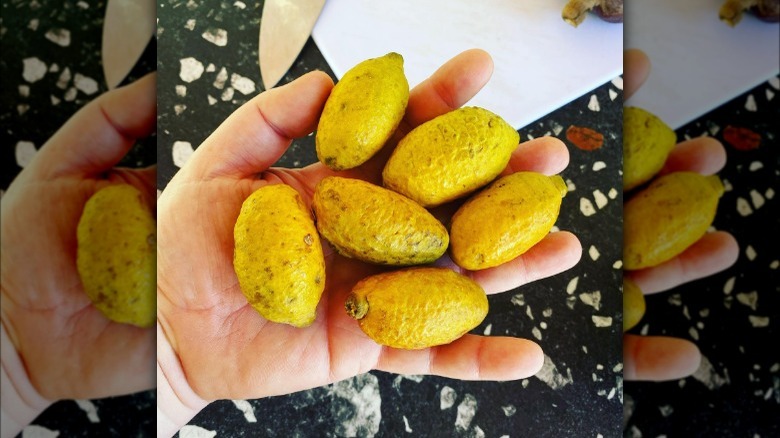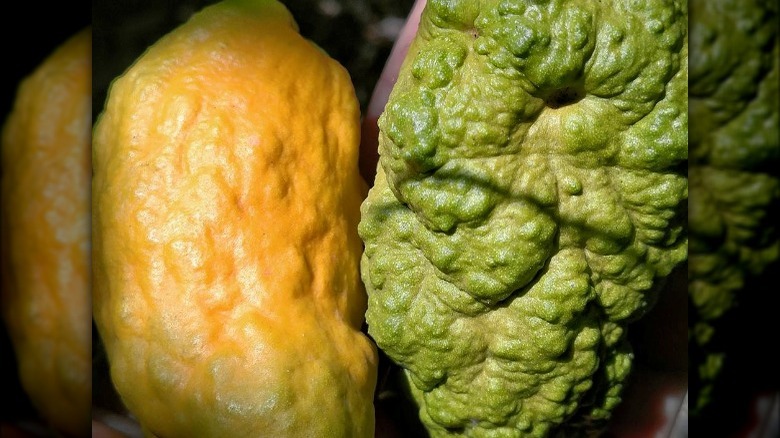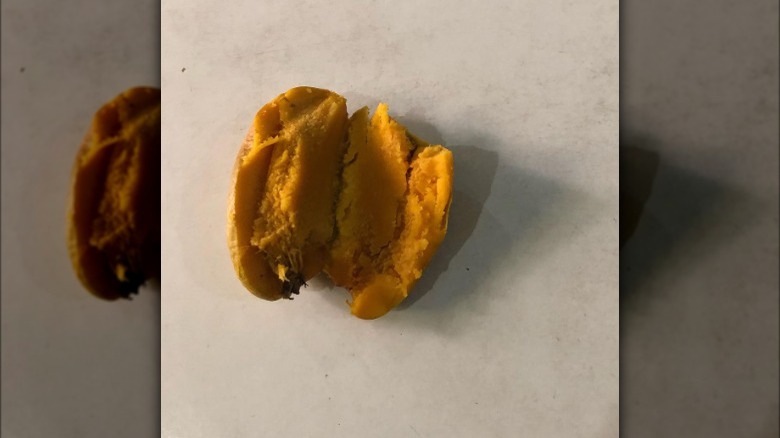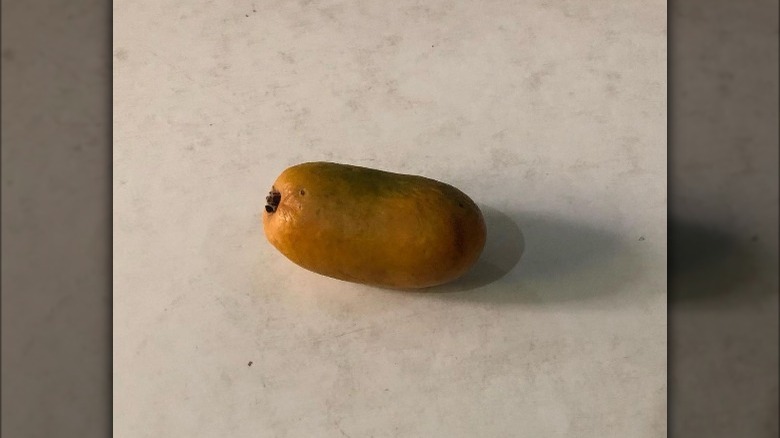Olosapo: The Central American Fruit With A Custardy Flavor
Fruit is a part of most people's diets, whether as a source of various vitamins and minerals or to satiate your sweet tooth. Even the biggest fruit fanatics likely haven't tasted every fruit out there, though. There are a host of rare, hard to source fruits around the globe that you may not have heard of or tasted.
One such fruit is olosapo, a sweet fruit grown in Central America, according to Atlas Obscura. Olosapo is highly sought after for its sweet, eggy, naturally custard-like flavor. The fruit is also prized for its rarity and how hard it is to source, as it is usually only acquirable by foraging where it grows natively. This sweet fruit packs a lot of flavor and is even described as being somewhat savory. There's a lot to learn about olosapo, from its origins, where it's grown, how and when to find it, and more.
What is olosapo?
Olosapo is also known by its botanical name couepia polyandra (via Atlas Obscura). It is a member of the couepia genus which, according to Encyclopedia of Life, contains 61 species. While the genus is native mostly to South America and Brazil, olosapo is found most often in Central America, specifically Mexico, Guatemala, Belize, Costa Rica, El Salvador, and Honduras.
It can be easily identified by its bright and warm yellow color when ripe and ready to eat. The skin is also naturally quite lumpy and has a tendency to dent in wherever touched or handled. Specialty Produce explains that olosapo has been grown in Central America for a few thousand years, and is most commonly found wild-grown, but is a particularly popular plant for gardens in Mexico and Costa Rica. It can, on very rare occasions, be found in India, Hawaii, and Florida, but you most likely won't find them sold — olosapo seeds were moved out of Central America mainly for scientific studies.
Olosapo vs. other rare fruits
Olosapo is a very unique, stand out fruit that isn't like many others in terms of sourcing or taste. It does have a somewhat similar appearance to mangoes when ripe, but olosapo is a lot lumpier. It also doesn't turn reddish-pink like mangoes. They are both found in Central America and are good sources of fiber and vitamin C (via Mango.org), but mangoes have a much more tropical, bright taste compared to olosapo's creaminess and slight savory edge.
There is another rare fruit that is often compared to a baked good, and that is rollinia, which Atlas Obscura describes as tasting like lemon meringue pie. They're both yellow, but that's about where the similarities end. Rollinia is found in Brazil, as well as parts of Southern Mexico, and it is commonly fermented and used to make wine. It's also readily available at local markets, where it's often displayed hanging from a rope — the fruit's skin is very sensitive, and will quickly turn black when handled too much.
What does olosapo taste like?
Olosapo has a very unique flavor profile that is commonly described as custard-like, according to Atlas Obscura. Its flavor is somewhere between sweet and slightly savory or umami, with a taste similar to eggs or sharp cheese. However, it's also clearly very sweet, also being likened to butterscotch. That is, assuming you've gotten a ripe fruit — unripened olosapo is green and so bitter it's inedible. Soft-skinned, sunshine yellow fruits will yield the best flavor.
How to cook with olosapo
Generally, olosapo is eaten as is. The skin is edible, but the seed isn't, per Specialty Produce. Due to its eggy, creamy taste and sweetness, it's also a great addition to pudding or ice cream along with other fruits. You can cook olosapo down into a jelly or puree it like any other fruit, or add it to savory dishes like salads for a unique twist. Its creamy texture also lends well to smoothies and milkshakes.
Where to buy olosapo
Unfortunately, if you want to try olosapo for yourself, you're not going to have to travel to where it's grown locally. As Specialty Produce explains, olosapo has never been commercially grown or sold. Instead, people often forage for it or grow it in their own gardens. That being said, you may have some luck finding it in local fruit or produce markets in Central America, especially since the tree produces hundreds of fruit per season. They're in season starting early in the fall and all the way through spring.
Nutritional information about olosapo
Olosapo is a major source of fiber, and has been a major source of the carbohydrate in Central American Indigenous communities for thousands of years, according to Specialty Produce. Harvard T.H. Chan School of Public health says that fiber has a range of health and dietary benefits, including lowering glucose and cholesterol and preventing constipation. It's also linked to a lowered risk of heart disease and diabetes.
Olosapo is also a source of vitamin C, which is also incredibly important for your health. As Mayo Clinic explains, vitamin C aids your body in the process of forming blood vessels, collagen, muscle, and cartilage. More than that, it's an antioxidant and can help fight against diseases like cancer and heart disease. It also helps your body store iron. On the flip side, a lack of vitamin C can lead to the development of scurvy, including symptoms not limited to anemia, bruising, oral health issues, and more.
